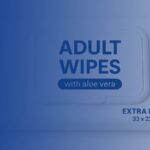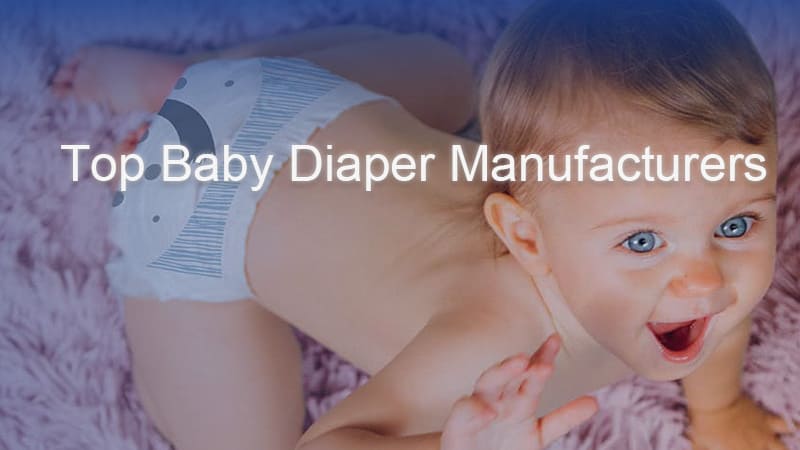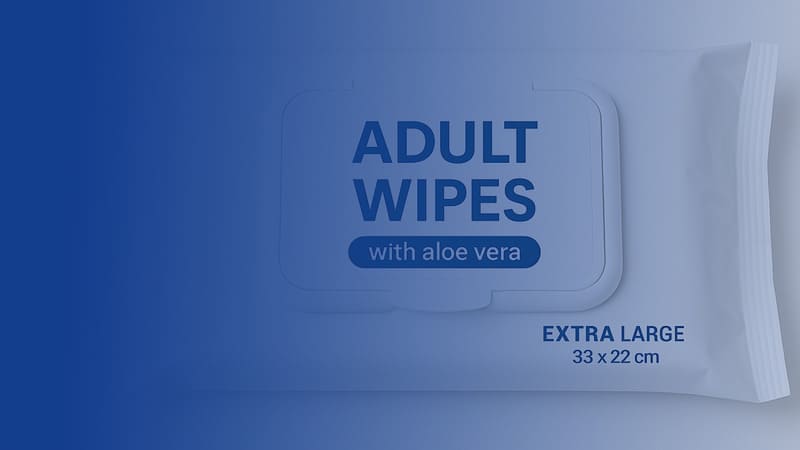
Quelle est la différence entre les lingettes standard standard GD4 et IWSFG?
mars 26, 2025
Top 5 fabricants de lingettes adultes
septembre 12, 2025When it comes to launching a baby wipes brand, regulatory compliance is not just a formality—it's a legal requirement and a vital trust signal for parents. Baby wipes are applied to a baby’s delicate skin, so governments enforce strict safety, labeling, and manufacturing standards. In this blog, we’ll break down everything you need to know about Regulatory Compliance for Baby Wipes, based on your target markets.
🧼 Why Regulatory Compliance Matters
Baby wipes fall under different categories depending on their formulation and claims:
-
Cosmetic products – Most water-based baby wipes for cleaning skin.
-
Medical devices – If the wipes claim to treat or prevent skin conditions (e.g., diaper rash).
-
Biocidal products – If they include disinfectants or claim antibacterial properties.
Each classification has its own regulatory path. Failing to comply can result in product recalls, fines, or even bans from selling in certain markets.
🌍 1. EU Compliance – Cosmetic Regulation (EC) No 1223/2009
If your baby wipes are sold in Europe and are considered cosmetics (e.g., cleansing wipes for skin), you must:
✅ Product Information File (PIF)
You must compile and maintain a PIF, including:
-
Full ingredient list with INCI names
-
Safety assessment by a qualified toxicologist
-
Microbiological and stability test reports
-
GMP (Good Manufacturing Practice) documentation
-
Label with warnings and usage instructions
✅ CPNP Notification
All cosmetic products must be registered on the CPNP (Cosmetic Products Notification Portal) before being sold.
✅ Claims Substantiation
Any claims like “hypoallergenic,” “gentle on skin,” or “fragrance-free” must be backed by data (e.g., clinical tests or dermatological evaluations).
🇺🇸 2. USA Compliance – FDA & FTC Guidelines (Expanded)
In the United States, baby wipes are regulated based on their intended use. If your product is marketed purely for cleansing the skin, it is typically considered a cosmetic. However, if your product claims to kill bacteria or treat diaper rash, it may be classified as an OTC drug or medical device, qui nécessite un processus d'approbation différent et plus rigoureux.
✨ A. lingettes de bébé cosmétiques (cas le plus courant)
Ce sont des lingettes utilisées pour nettoyer la peau d'un bébé, en particulier pendant les changements de couches. Les exigences de conformité comprennent:
Sécurité des ingrédients
-
Seuls les ingrédients reconnus comme sûr pour l'utilisation cosmétique peut être inclus.
-
Évitez les substances restreintes ou interdites répertoriées par le FDA, comme les composés de mercure ou les relances de formaldéhyde.
Exigences d'étiquetage (21 CFR 701)
-
Identité du produit (par exemple, «lingettes nettoyantes pour bébé»)
-
Contenu net aux États-Unis et unités métriques
-
Liste des ingrédients au format INCI
-
Nom et adresse du fabricant / distributeur
-
Directions et avertissements Le cas échéant
RÉCLAMATIONS SUPPRIMANCE
-
Vous ne pouvez pas impliquer un avantage thérapeutique, sauf enregistré comme médicament.
-
Des affirmations comme «hypoallergénique», «testée par dermatologue» ou «biodégradable» doivent être étayé.
Conformité GMP
-
Bien que l'enregistrement cosmétique ne soit pas obligatoire, suivant GMP est essentiel. La FDA peut inspecter et émettre des lettres d'avertissement pour la non-conformité.
✨ B. Si vos lingettes sont des médicaments (OTC) ou des antibactériens
Si vous faites des affirmations comme:
-
"Tue 99,9% des bactéries"
-
"Désinfection des lingettes pour les mains de bébé"
-
"Traitement / empêche les éruptions coulières"
Ensuite, vos lingettes sont classées comme Médicaments en vente libre (OTC), et vous devez:
-
Enregistrez l'installation avec le Enregistrement de l'établissement de médicaments de la FDA
-
Liste sous approprié Monographie de la FDA
-
Inclure un Drogues faits panneau
-
Conduire tests cliniques pour prouver l'efficacité et la sécurité
Ces exigences augmentent considérablement le temps et le coût.
🇬🇧 3. UK Compliance – UK Cosmetics Regulation (Expanded)
Après le Brexit, le Royaume-Uni a établi son propre cadre de réglementation cosmétique, reflétant en grande partie la régulation de l'UE (CE) n ° 1223/2009 mais avec des différences clés.
✨ A. Classification comme cosmétique
Les lingettes pour bébés au Royaume-Uni sont classées comme produits cosmétiques si leur fonction principale est le nettoyage et qu'ils ne portent pas de revendications médicinales.
✨ B. Personne responsable du Royaume-Uni (RP britannique)
Avant de placer un produit sur le marché britannique, vous devez nommer un Personne responsable du Royaume-Uni (RP). Cette personne ou cette entité est légalement responsable:
-
Assurer la conformité aux réglementations
-
Maintenir le fichier d'informations sur le produit (PIF)
-
Gérer les processus de sécurité et de rappel
Si vous êtes en dehors du Royaume-Uni, votre importateur ou votre entreprise de conformité peut servir de RP.
✨ C. Notification SCPN
Les produits doivent être enregistrés via le Soumettre la notification des produits cosmétiques (SCPN) Portail avant la vente en Grande-Bretagne (Angleterre, Écosse, Pays de Galles). Détails requis:
-
Nom et type du produit
-
Contact RP
-
Ingrédients de l'inci avec pourcentages
-
Fonction du produit et images d'étiquette
Note: Irlande du Nord suit toujours I Règles CPNP.
✨ D. Exigences d'emballage et d'étiquetage
Les étiquettes britanniques doivent inclure:
-
Nom et fonction du produit
-
Liste des ingrédients (INCI)
-
Numéro de lot
-
Nom du fabricant / RP et adresse britannique
-
Contenu net
-
Date d'expiration ou période après l'ouverture (PAO)
-
Avertissements et instructions d'utilisation
✨ E. réclamations et tests
Les réclamations doivent être:
-
Véridique et non trompeur
-
Supported by data (e.g., RIPT for "hypoallergenic")
-
Les affirmations environnementales comme «biodégradables» peuvent nécessiter une certification tierce (par exemple, OK Compost)
🌐 4. Asia-Pacific & Middle East Compliance (Brief Overview)
ASEAN Countries (e.g., Malaysia, Indonesia, Thailand)
-
Follow the ASEAN Cosmetic Directive
-
Notify the Ministry of Health
-
Appoint local Responsible Person or importer
GCC Countries (e.g., UAE, Saudi Arabia)
-
Register with GSO or local authorities
-
Arabic labeling often mandatory
-
Pre-approval needed for marketing and claims
🔍 Testing and Documentation Checklist
-
Dermatological safety test
-
Patch test (HRIPT or RIPT)
-
Microbial limit test (TPC, yeast/mold)
-
Preservative efficacy test (Challenge Test)
-
Stability testing (under varied temp/humidity)
-
Document GMP compliance
✅ Best Practices for Staying Compliant
-
Partner with an experienced OEM manufacturer certified with ISO 22716, ISO 13485, or FDA GMP
-
Use a regulatory consultant when selling in multiple markets
-
Update your PIF and labels with every formula or packaging change
📅 Conclusion
Bringing baby wipes to market is not just about packaging and price—regulatory compliance ensures safety, trust, and long-term brand reputation. Investing in proper testing, documentation, and regulatory processes protects your business and ensures that babies everywhere receive the safe care they deserve.
Looking for a compliant OEM baby wipes manufacturer? Contactez-nous aujourd'hui—we help brands meet all regulatory requirements from formula to packaging.
- Lingettes à l'eau
- Thaïlande
- Label privé
- lingettes
- OEM
- Fabricants
- Lingettes démaquillantes
- Lingettes de cuisine
- Lingettes Intimes
- Lingettes jetables
- Désinfecter les lingettes
- fabricant de couches
- Lingettes rafraîchissantes
- Lingettes pour le corps
- Lingettes pour bébés
- couches de bébé
- lingettes adultes
- Gant de toilette adulte
Catégories de lingettes humides:
Type d'emballage :
Vous avez une question ?
Si vous avez des questions, n'hésitez pas à nous envoyer un message. Nous répondons sous 8 heures !





